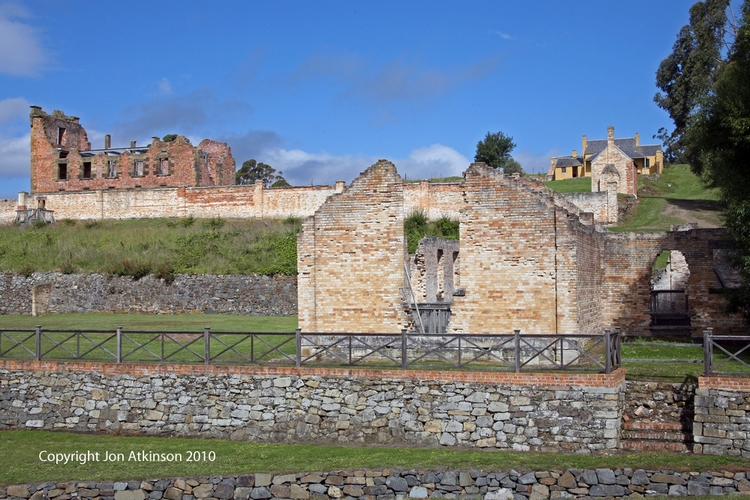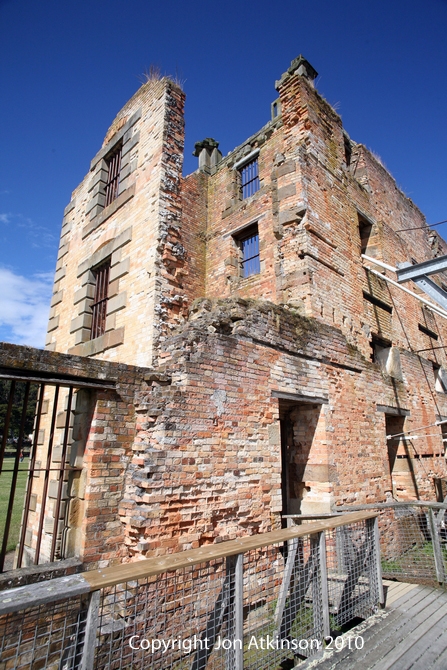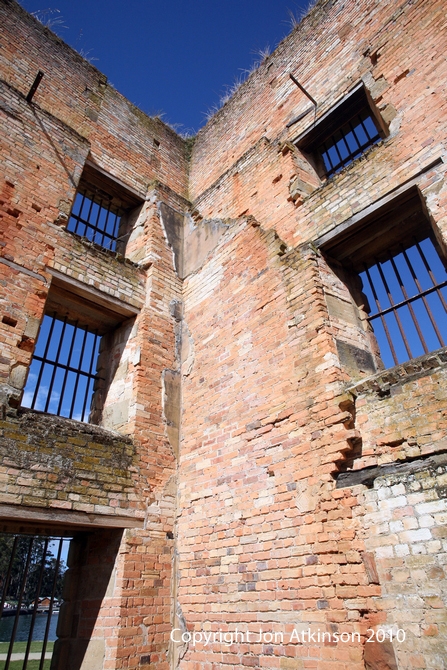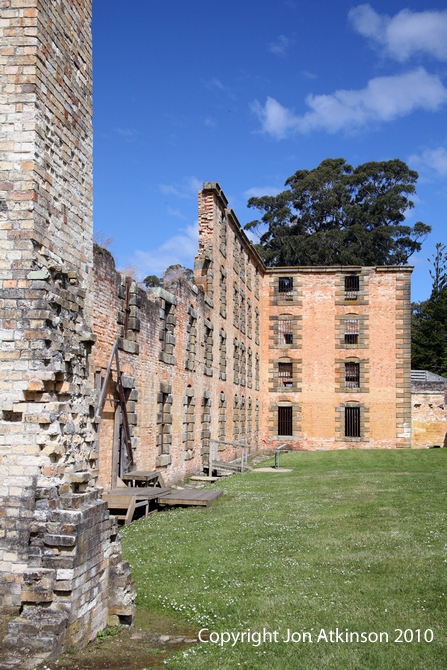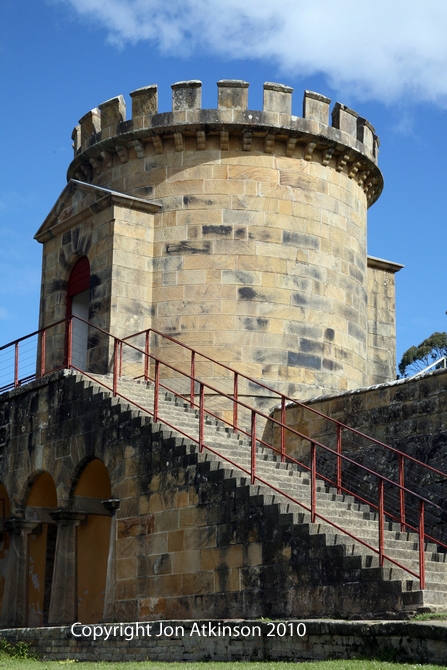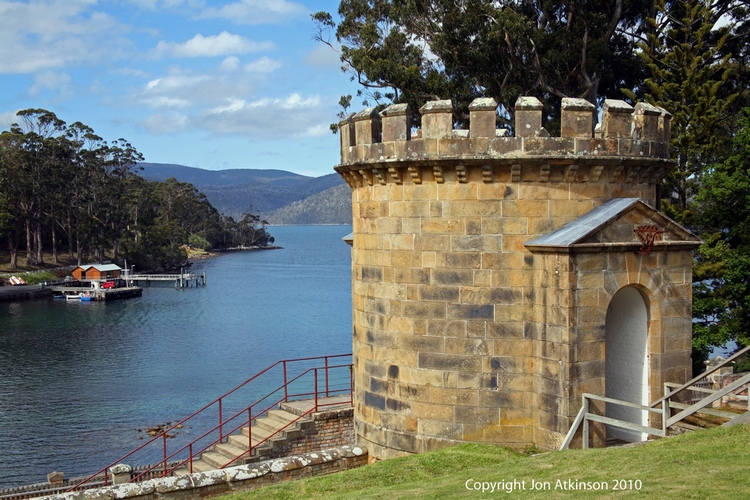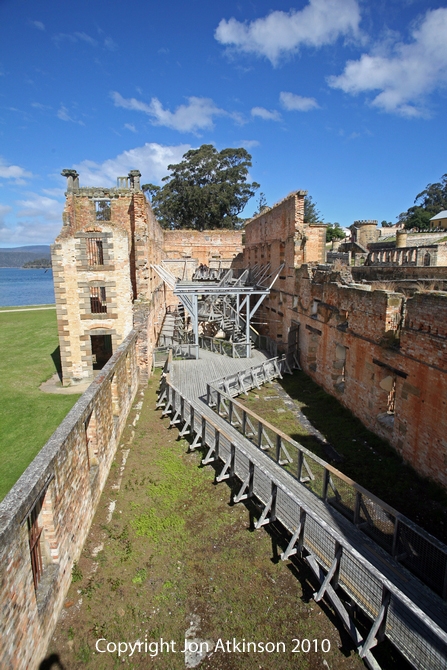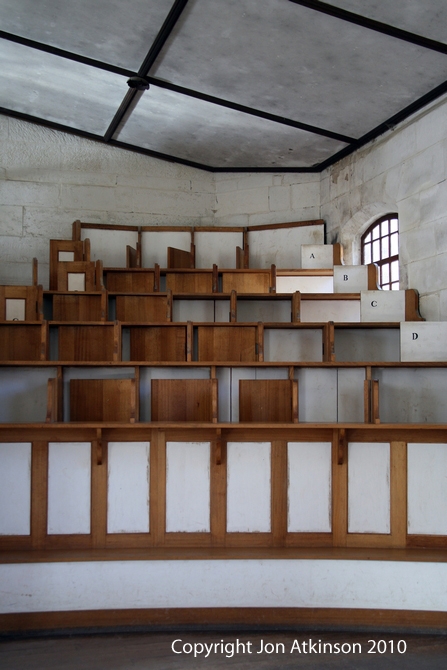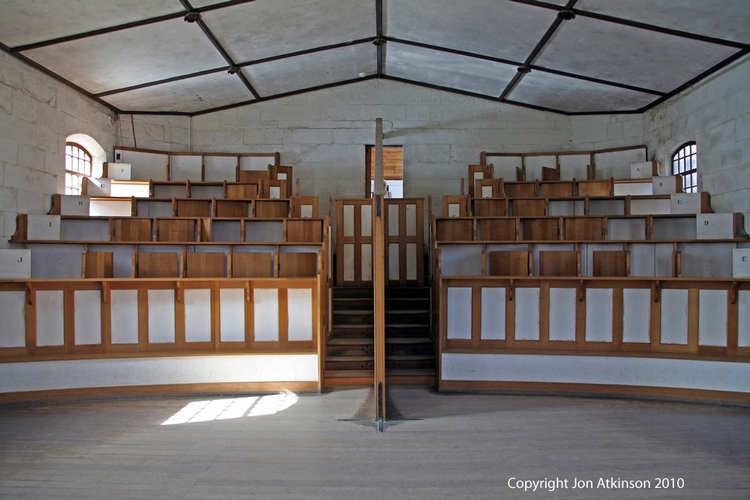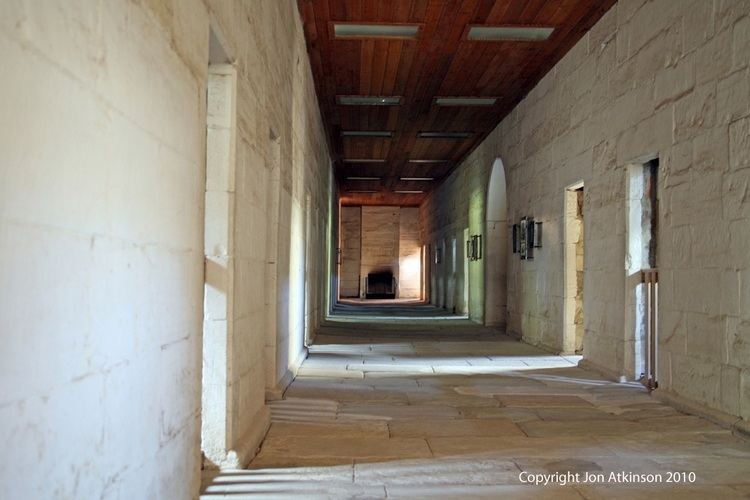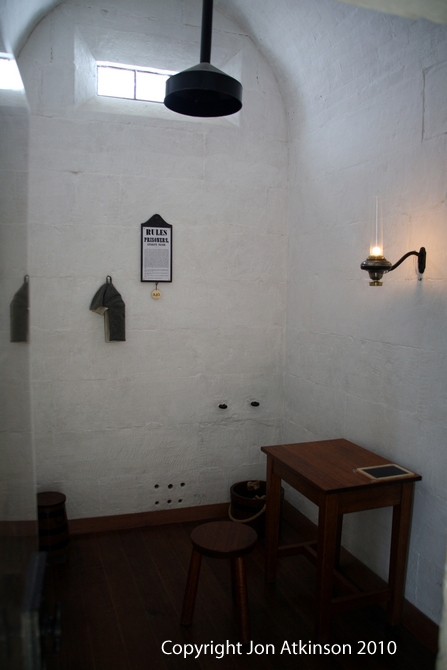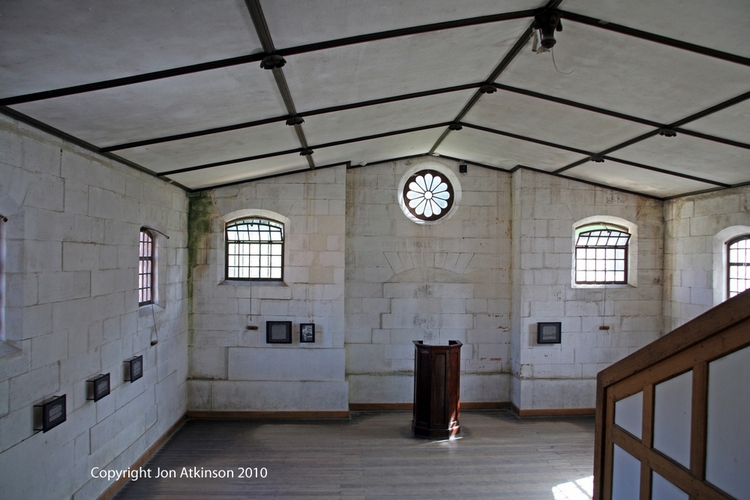Port Arthur 1 - Penitentiary: Port Arthur’s history began in 1830 when approximately 150 convicts were first transported to the peninsula to chop trees and to erect rough timber and bark huts. Initially, Port Arthur was intended to be just a timber sawing station where severe punishment would be carried out to its prisoners. |
Port Arthur 2 - Penitentiary: Port Arthur was the most feared convict prison in the whole of colonial Australia. Between 1830 and 1877, 12,500 convicts served their time here. Port Arthur's convicts were the most serious Australian convicts, they were the ones that after having been deported to Australia continued committing crimes. |
Port Arthur 3 - Penitentiary: On the hill above the paupers mess are the ruins of the colony's hospital which was built in 1842 and once housed up to 80 ill convicts. It is a reminder that Port Arthur was at the forefront of what was at the time believed as 'humane' treatment of prisoners. |
Port Arthur 4 - Penitentiary: Now an imposing ruin, the Penitentiary was constructed in 1843 as a flour mill and granary. In 1857 it was converted into a penitentiary, capable of housing over 500 convicts. It contained 136 single cells as well as large dormitory accommodation.
| Port Arthur 5 - Penitentiary:The main prison, called Port Arthur Penitentiary, was ready in 1844. Located right on the waterfront, this 75m long four-storey building was at the time the largest building in Australia. |
Port Arthur 6 - Penitentiary: The prison closed in 1877 and the building was gutted by fire 20 years later in 1897 and lay derelict until a conservation program began in the 1960s.
|
Port Arthur 8 - Watch Tower: A watch tower in front of the Militray complex overlooking the sea and prison. |
Port Arthur 9 - Penitentiary: The Formidable Penitentiary Walls at the Port Arthur Penal Settlement, Australia. |
|
Port Arthur 10 - Coal Mines Historic Site: The Coal Mines Historic Site was Tasmania’s first operational mine, established as a much-needed local source of coal, but also as a place of punishment for the worst convicts. Coal was discovered at the Site in 1833 and a team of convict labourers was quickly dispatched to begin extracting it. The first shipment left the mine the following year, and the mine was in continuous use for the next 40 years, producing around 60,000 tonnes of coal over its life. |
Port Arthur 11 - Model Prison Chapel: Port Arthur’s Separate Prison was closely modelled on Pentonville in London, England; hence was known as the Model Prison. It was designed by the Royal Engineers and built with convict labour between 1853 and 1855. The building contained 80 cells in the shape of a cross with radial exercise yards around a central hall and church. |
Port Arthur 12 - Model Prison Chapel: The purpose was not to physically punish prisoners but hit them psychologically. Port Arthur's Model Prison had a chapel with slats between the seats to prevent any eye contact between prisoners. |
Port Arthur 13 - Port Arthur, Model Prison, Tasmania, Australia: Each new arrival spent 4 to 12 months in the Separate Prison before being assigned to work outside. Prisoners were hooded and made to stay silent, this was supposed to allow time for the prisoner to "reflect upon the actions which had brought him there". |
Port Arthur 14 - Example Cell, Port Arthur, Model Prison, Tasmania: Thick walls and doors ensured complete separation and silence between prisoners. Men spent 23 hours per day in their cell; they only emerged for exercise, school and chapel. Warders wore slippers and communicated by hand signals to ensure that silence was complete at all times. |
Port Arthur 15 - Port Arthur, Model Prison Chapel: Due to the fact that prisoners were given separate solitary cells, that they were called by a number and not by a name, that total silence was enforced and that head masks were worn whilst in the exercise yards many of the prisoners developed mental illness from the treatment. |



